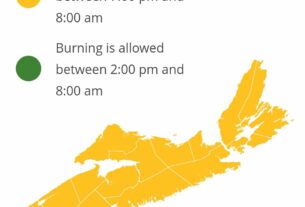**** Info via Environment Canada
September Temperature Outlook
August summary
The month of August brought less tornado activity then July but the heat continued, especially in the West and the North. A record-breaking hailstone was found in Alberta.
Heat:
A prolonged period of warm weather affected much of the country in August, particularly western and northern Canada. Areas in the west and North saw temperatures that were 3 to 4 degrees above average for the month. In the west, the month of August will likely rank among the warmest Augusts on record. For portions of the Kivalliq region of Nunavut (near Hudson Bay) and the Northern Prairies, some stations reported the warmest temperature ever recorded so late in the summer.
Tornadoes:
Seven tornadoes occurred in August, with two tornadoes in Saskatchewan, one in Manitoba and four in Ontario. On August 4, an EF-02 Tornado formed near Erinferry, in Saskatchewan, but luckily only trees and power poles were damaged. No serious injuries were reported from the August tornado activity.
Hail:
August 1, the largest hailstone ever recorded in Canada was found close to Markerville Alberta. The weight of the hailstone was 292.71 grams, with a diameter of 123 mm.
September outlook
Here is the forecast for the “temperature anomaly” for the month of September. The temperature anomaly is the “difference from normal temperatures” for the entire month.
The forecasts are categorized as follows:
- blue indicates the probability that temperatures will be below normal;
- grey to purple indicates the probability that temperatures will be near normal; and
- yellow to red indicates the probability that temperatures will be above normal.
*All categories are compared to the 30 seasons of the 1991-2020 period

This is a prediction of the anomaly of the mean daily temperature at 2 metres (i.e., at standard temperature observation height). It is not a forecast of the maximum nor of the minimum daily temperature.
Long-range forecast user guide.



